Best Low Maintenance Hedge Plants for Garden Enhancement: A guide to easy care plantsThe following content also has some reference value for raised garden beds.
It is no coincidence that the beauty and simplicity of well-maintained hedges often catch our eye as we walk through some of our favourite gardens. These living walls provide privacy, structure and a sense of order to any outdoor space.
But let's be honest; Not all of us have the time or inclination to prune or dispose of fussy plants on a regular basis - especially when it comes to elevated garden beds, where accessibility can be challenging.
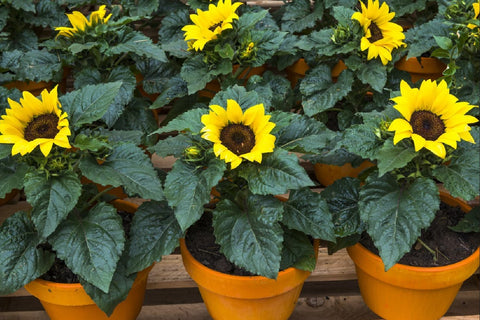
Don't be afraid! You don't need a green thumb or countless hours to enjoy the beauty and function of a garden hedge. There are plenty of low-maintenance hedge plants just waiting to decorate your space without requiring much attention.
In this article, we'll explore some of the top options that combine hardiness, adaptability, and minimal maintenance requirements so you can focus on enjoying your garden instead of constantly tending to it.
Best low maintenance hedge plants for raised gardens
The art of creating a beautiful and functional elevated garden often comes down to choosing the ideal low-maintenance hedge plant. The perfect combination of these easy-to-care plants not only provides an attractive living boundary, but contributes to the overall health and vitality of your garden. Evergreen plants are particularly suited for this purpose, as they maintain dense foliage throughout the year, providing both privacy and visual pleasure.
There is certainly no shortage of options when it comes to choosing hedge plants to flourish in your garden. From dense shrubs to towering trees, each plant has its own unique advantages and characteristics.
As we delve into an overview of hedge plants suitable for raising gardens, you'll discover how simple it is to use low-maintenance evergreens, flowering shrubs and even fruiting plants to create stunning landscapes. Not only do these hedge plants add beauty and structure to your garden, they also provide privacy, reduce noise, and support local wildlife.
So whether you're looking for year-round greenery, a seasonal burst of color, or both, there's a perfect hedge plant for every raised garden design.
Overview of hedge plants
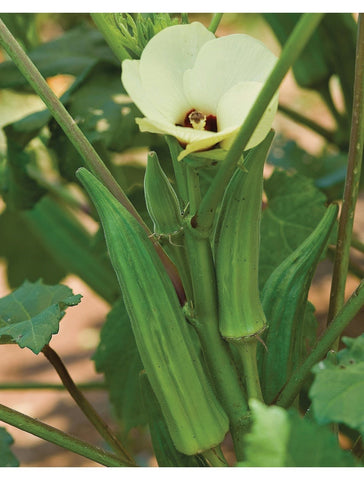
Choosing the best hedge plants is crucial when it comes to creating an attractive and functional garden.
Low-maintenance hedges are particularly good for planting gardens because they require minimal effort while providing a beautiful backdrop and privacy.
Evergreen hedge plants are often preferred by gardeners, who like year-round foliage that adds visual pleasure even in the colder months.
Planting hedges with these properties not only makes your gardening life easier, but also ensures the continued beauty of your outdoor space.
Armed with this knowledge, we can now delve into the various benefits hedges provide to the garden.
Benefits of low maintenance hedge plants to cultivated gardens
Hedges are a great way to enhance the privacy of your garden - they act as a natural barrier against nosy neighbours and give a sense of calm. They can also act as windbreaks, protecting plants from strong winds and reducing wind damage. Finally, hedges also help reduce soil erosion and ensure that your precious soil is protected.
privacy
Imagine the peace of relaxing in your garden surrounded by lush low-maintenance hedge plants that not only add to the beauty of your space, but also provide a natural barrier of privacy from prying eyes.
As a horticulturist or passionate gardener, you'll appreciate how these multifunctional green barriers create intimate corners while protecting and defining outdoor shelters.
Choosing the perfect privacy fence for your raised bed can be as simple as choosing a species with dense foliage and stable growth habits, such as boxwood or yew.
So revel in the tranquility of your secluded haven, knowing that it's all thanks to those hard-working evergreen beauties who border your paradise.
windproof
But that's not all these best low-maintenance hedge plants can do for your garden; They also act as a barrier against strong winds.
Windbreak is essential to keep delicate flowers healthy and prevent soil from eroding or drying out too quickly.
Sturdy hedges such as privet, juniper, or poplar are great choices to protect your precious flowers while adding an elegant backdrop to your garden design.
So go ahead and let those gentle breezes turn to blustery winds - and you'll have the peace of mind knowing that, thanks to its mighty green guardians, your thriving refuge is unscathed.
Control soil erosion
But wait, there's more to these wonderful low-maintenance hedge plants than meets the eye! As we mentioned earlier, they're a bulwark against strong winds, but did you know they also play a vital role in controlling soil erosion?
That's right - by planting these sturdy green sentinels around your garden bed, you can not only protect delicate flowers from strong winds, but also prevent valuable topsoil from being washed away during heavy rains.
Bonus tip: If you need any help, a good patio garden raised bed is the perfect way to protect your plants from soil erosion during rainstorms and keep a low-maintenance gardening experience.
This means that your nutrient-rich soil stays where it belongs, nurturing and supporting the growth of all your lovely plants.
So go ahead and enjoy the rainy days - with hedges like this protecting your garden paradise, you don't have to worry about losing any land.
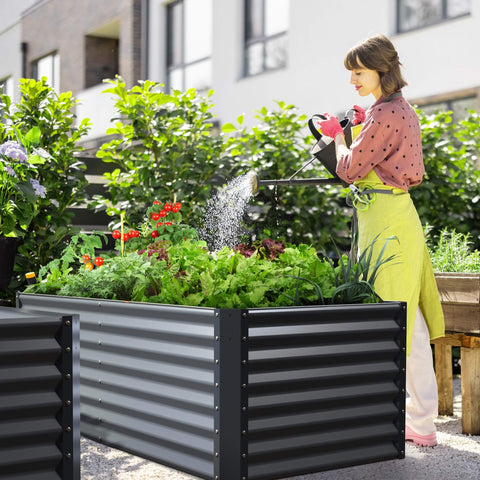
Low maintenance hedge plant choice
Evergreen plants are a good choice because they have leaves all year round and require little pruning. Deciduous plants, on the other hand, may require more maintenance as they lose their leaves during the winter and need to be pruned annually.
Evergreen plant
You'll absolutely love evergreen plants when it comes to low-maintenance hedges as a garden option. They are the perfect choice because they offer year-round interest and require minimal maintenance - just what you need!
These hardy beauties can withstand all kinds of weather conditions while maintaining their vibrant foliage year-round. With so many evergreens to choose from, there's bound to be one that suits your style and space limitations.
So why wait? Start exploring the wonderful world of evergreens today and create that amazing hedge you've always dreamed of.
Deciduous plant
Now that you've discovered the beauty and benefits of evergreen plants, let's not forget deciduous plants.
These amazing foliage plants provide some of the best low-maintenance hedge plants as they shed their leaves in the fall and regrow in the spring.
Deciduous plants can offer a range of colors throughout the year, from vibrant greens to fiery reds, oranges and yellows - creating quite a visual feast!
So whether it's combining evergreen with deciduous plants or choosing just one plant, there are plenty of options to create your perfect easy-to-care garden paradise.
You can plant certain plants to make a nice hedge
Carried them out
Also known as common boxwood, boxwood is perfect for growing gardens. This evergreen shrub has no small, glossy green leaves and can reach 15 feet tall. Cypress poplar is drought tolerant and can thrive in a variety of soil types.
The Holly plant CRENATA
Green Holly, or Japanese Holly, is another low-maintenance hedge plant that is perfect for growing gardens. This evergreen shrub has small, dark green leaves that reach up to 10 feet tall. Green green Holly tolerates all soil types and prefers full sun to partial shade.
LIGUSTRUM japonicum
Privet privet is an evergreen shrub often used as a hedge plant. It has small, smooth green leaves and can grow up to 10 feet tall. liustrum japonicum is tolerant of all soil types and prefers full sun to partial shade.
Yew BACCATA
Yew, or English yew, is an evergreen tree often used as a hedge plant. It has dark green needles and can reach a height of 30 feet. Taxus prefers full sun to partial shade and grows best in well-drained soil.
Cypress OCCIDENTALIS
Cypress is an evergreen tree often used as a hedge plant. It has scaly, yellow-green leaves that can reach a height of 40 feet. Western soil trees prefer full sun to partial shade and grow best in moist, well-drained soil
The plum belongs to LAUROCERASUS
The English laurel, Prunus laurocerasus, is an evergreen shrub or small tree often used in hedges. It has dark green shiny leaves and can reach heights of 20 feet. Laurel prefers full sun to partial shade and grows best in moist, well-drained soil.
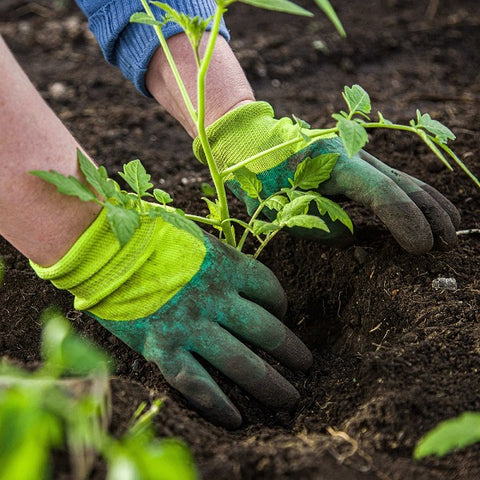
Orange blossom
Mexican neroli, also known as Choisya ternata, is an evergreen shrub with fragrant white flowers that bloom in the spring. It has smooth green leaves and can grow up to 8 feet tall. Neroli prefer full sun to partial shade and grow best in well-drained soil. The sweet fragrance of the white flowers makes it a popular choice for gardens and yards.
If you want to see white flowers and fragrant shrubs in the spring, then orange blossom is perfect. With its glossy green leaves and bright white flowers, it can provide beauty to any landscape.
camellia
Camellia is an evergreen shrub or small tree with large flowers that come in a variety of colors, such as white, pink, red, and yellow, depending on the variety. The flowers can be single or double and have a subtle fragrance. It prefers partially shaded, humus-rich, well-drained soil.
Camellia is an excellent choice for any garden because it is beautiful and fragrant in spring. The variety of colors of its flowers will add interest to your landscape and is one of the best low-effort plants for your garden. They are also spring flowers and can make a great contrast with other dark green leaves!
Red berry
While not as popular as the other shrubs and trees listed above, red berries are a great way to add color to your garden. There are many varieties of these berries, such as Holly, Holly, pyracantha, and pods. Another popular choice is English Holly, which is known for its bright red berries and evergreen leaves.
They can be used as hedges or planted alone as ornamentals, and the sharp color contrast between the dark green leaves and the red berries is especially good.
Red berries are also easy to maintain and have evergreen leaves, making them a good choice for year-round color. They like full sun and well-drained soil, although they can tolerate some shade. Just be sure to prune regularly to keep the plant healthy and encourage more flowering and berries.
In addition to providing color, red berries are also an important food source for birds, require little maintenance, and are one of the best low-maintenance, slow-growing evergreen alternatives!
How to choose the best low-maintenance hedge plants for your garden
Choosing the right hedge plant for your garden can be a daunting task, but if you consider climate, hardiness, soil type, size, sunlight, pruning, watering, pests, cost and maintenance, you will find the perfect hedge for your garden. Let's look at some of the most important factors.
climate
When choosing the best hedge plants for your garden, it is essential to consider the climate in your area.
You need a plant that can withstand temperature fluctuations, precipitation levels, and varying amounts of sunlight throughout the year to ensure its longevity and health in an outdoor space.
Some species may thrive in cold winters, while others are better suited to warmer weather patterns.
By taking these factors into account, you have not only chosen a hedge plant that will flourish, but also one that will require minimal maintenance as it gradually adjusts to its environment.
It is therefore vital that you carefully assess the climate of your area before making a final decision on which hedge plants to include in your garden design. Remember, you can always use tools like self-watering POTS or rain barrels to give your hedge plants extra moisture during dry periods.
Cold tolerance
After understanding the importance of climate in choosing hedge plants, another key factor to consider is their hardiness.
As a gardener or horticulturist, you will understand how important it is to choose low-maintenance and resilient plants that can withstand a variety of environmental stresses such as frost, heat waves and pests.
Cold tolerance plays an important role in determining how well a particular species will thrive in your garden, and you pay very little attention to it.
By choosing hedge plants with a track record of hardiness, you can not only ensure their survival, but also create an attractive green space that stays lush and vibrant all year round.
Soil type
Now that you've considered hardiness, it's time to take a closer look at soil types when choosing the best plants.
As any experienced gardener knows, your success in planting hedges depends largely on how well the plants you choose adapt and thrive in the specific soil conditions of the space you're in.
Different species have different preferences for acidity, drainage, fertility and moisture retention in their growing medium.
By choosing hedge plants that perform particularly well in the specific soil type you're using - whether clay, loam, or sandy - you can not only save yourself countless hours of frustration, but also effortlessly create a lush sanctuary that requires minimal intervention from you.
Don't forget; A happy plant is equal to a beautiful garden!
Tips for planting hedges on raised beds
After considering your options and choosing the best hedge plants, and perhaps reviewing other plants you should grow in your garden bed, it's time to turn your attention to planting your hedge in the perfect place.
Raised beds offer many advantages for growing hedge plants, such as improved soil quality and better drainage, but they also have their own unique challenges.
To ensure that your hedge thrives in its new home, be sure to give each plant plenty of room to grow as suggested below
In addition, large amounts of organic matter are mixed into the soil during planting to help provide nutrients and improve the soil structure within ridge beds.
With these tips in mind, you'll be well on your way to creating a compelling, functional addition to your landscape.
Next came learning how to care for hedge plants in the garden so that they can thrive in each season.
How to care for garden hedgerows
Just like a well-cut suit or the perfect little black dress, your hedge plants are an essential element in your garden wardrobe. It can be used both as a statement and as a structural prop for other plants to live on.
To keep your hair looking its best, you should follow some simple care tips. Your low-maintenance evergreen will thank you if you give it a little attention once in a while. Consider the following four key factors when caring for hedge plants in your garden:
- Water: Although hedge plants are less expensive to maintain, they still need water to thrive. Be sure to keep the soil evenly moist, but not soggy.
- Feed: Fertilize your hedge plants once a year, preferably before new growth begins in early spring.
3 Trim: Trim any dead or damaged branches to maintain the desired shape and size of the hedge plant.
- Mulch: Cover the underside of hedge plants with mulch to help retain moisture, suppress weeds, and regulate soil temperature.
Remember, even low-maintenance plants need some pampering once in a while! With these simple steps, you can explore how to maximize the benefits of low-maintenance hedge plants in other aspects of your gardening journey.
How to maximize the benefits of low-maintenance hedge plants
In order to truly maximise the benefits of low maintenance hedge plants in cultivated gardens, it is vital to select the right species and provide proper care.
Choose versatile evergreen shrubs such as boxwood or privet, and you'll enjoy year-round foliage while also benefiting from their ability to thrive in a variety of conditions.
For fast-growing hedges that require minimal maintenance, consider planting species such as Leyland cypress or laurel.
With proper placement and regular pruning, these low-maintenance hedge plants can not only enhance the beauty of your garden, but also have practical uses such as privacy shielding and windbreak.
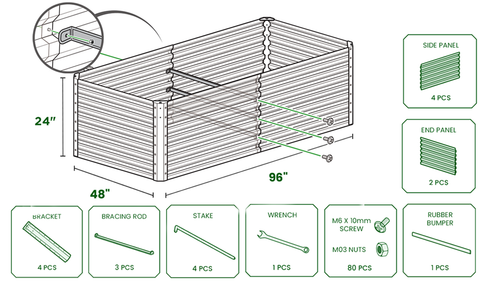
conclusion
All in all, low-maintenance hedge plants are the gardener's best friend. They offer privacy, aesthetics, practicality, and any flower bed does not require much time and effort in return.
Just as the right partner can make our lives more enjoyable and less burdensome, these resilient plants work in harmony with their surroundings to create fascinating landscapes that we can enjoy every day.
Anyway, if you're looking for materials to grow hedges, With our extensive selection, the most affordable materials, easy-to-follow instructions, and helpful customer service, you can get everything you need to make your landscaping project a success.









